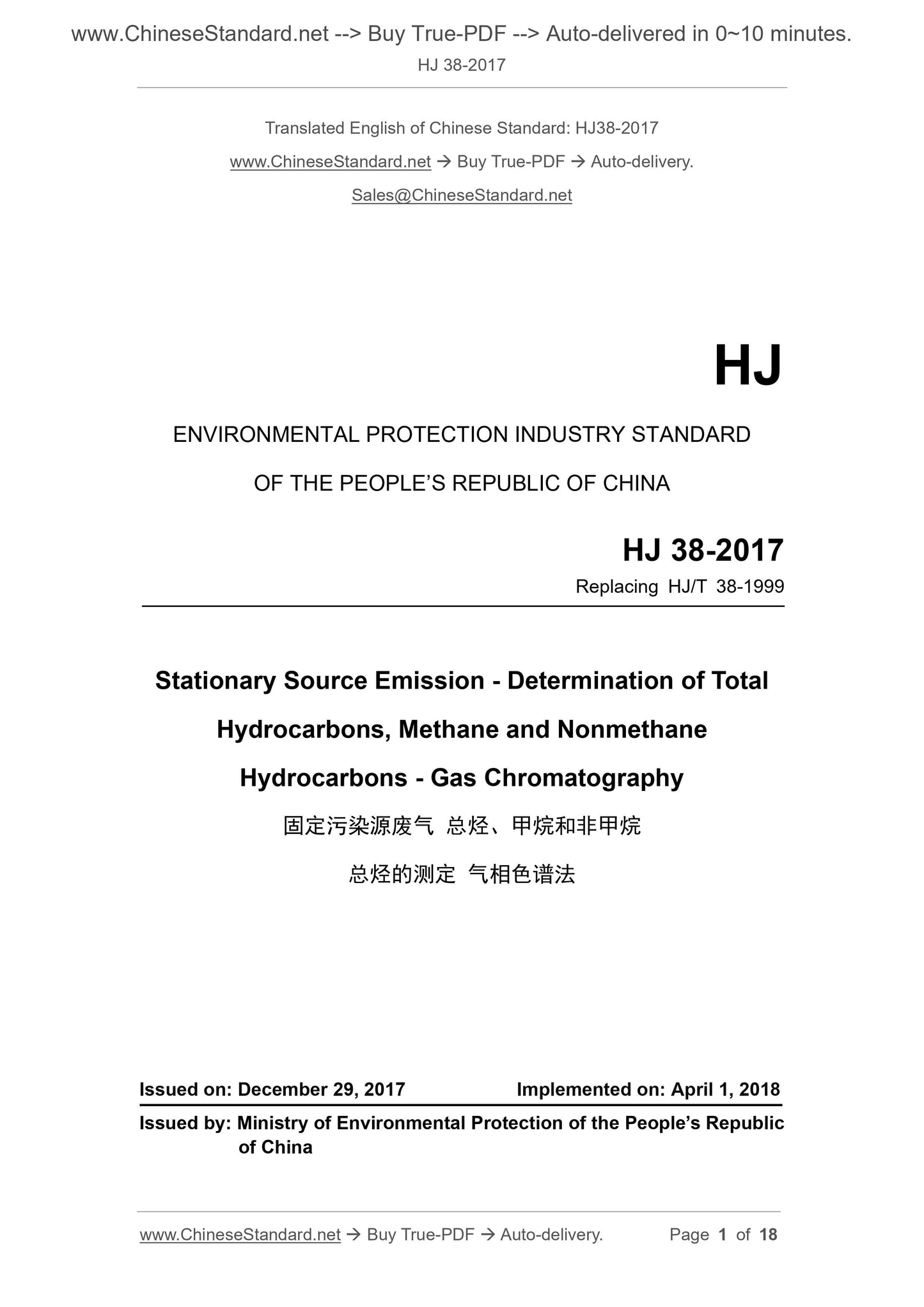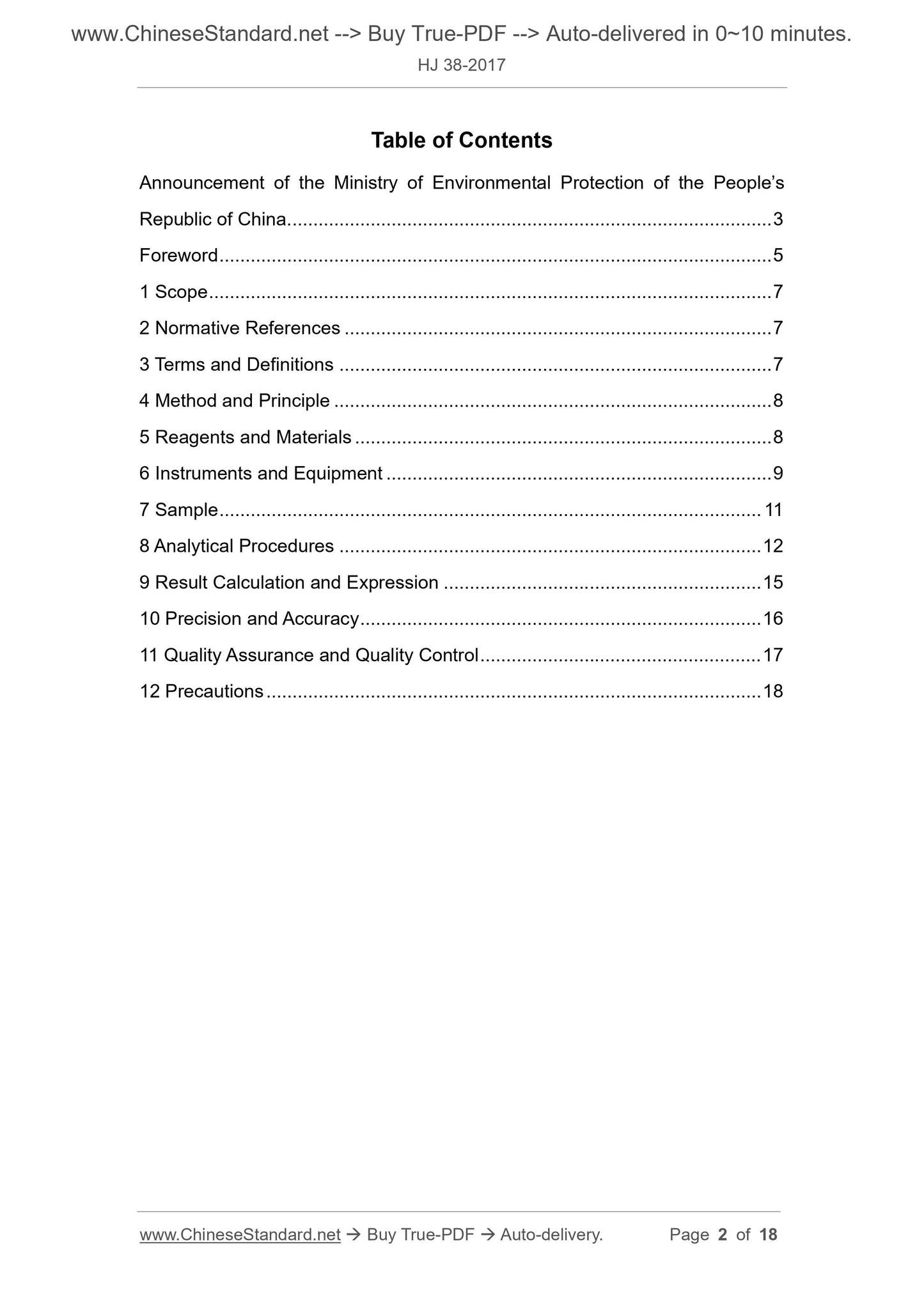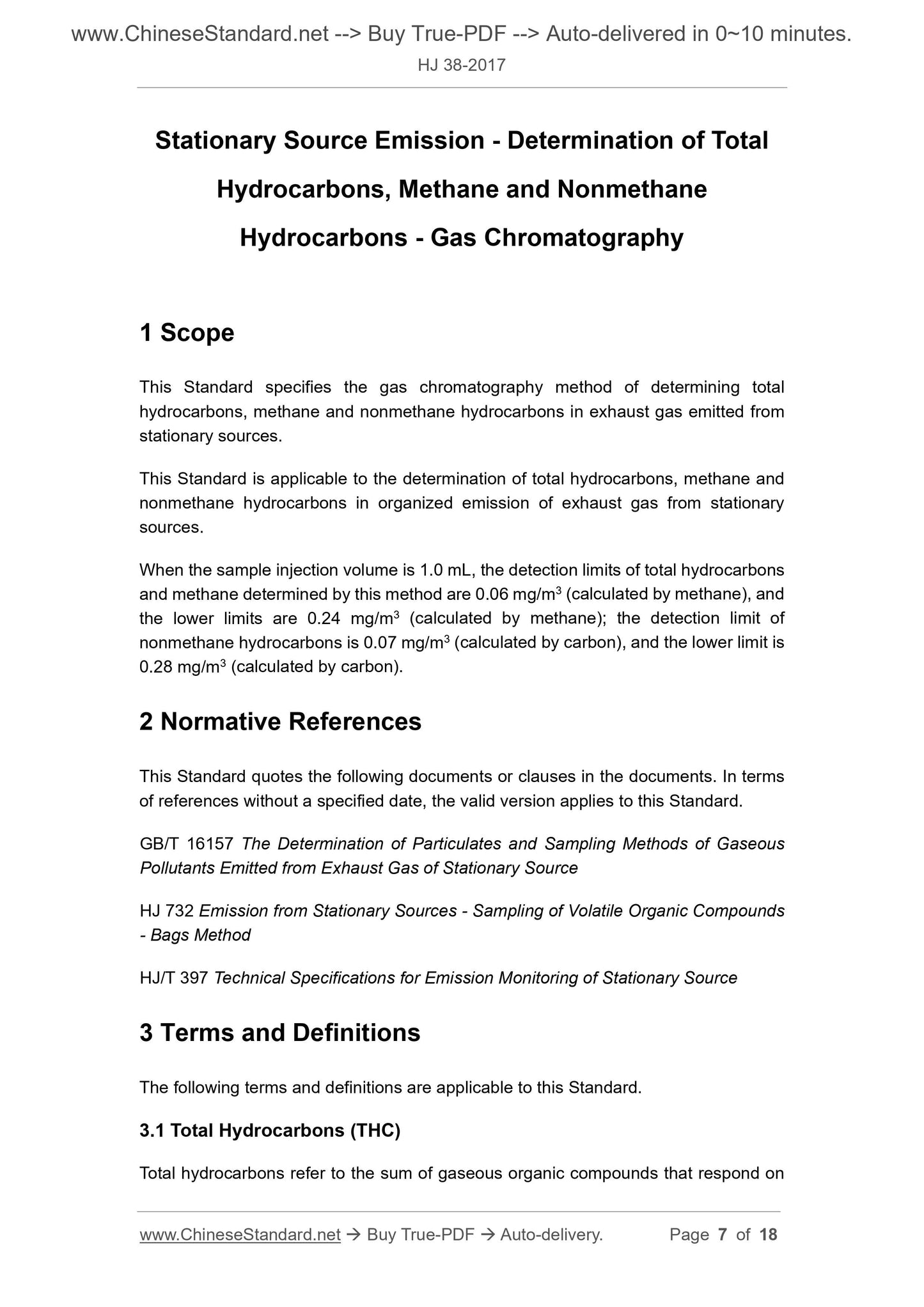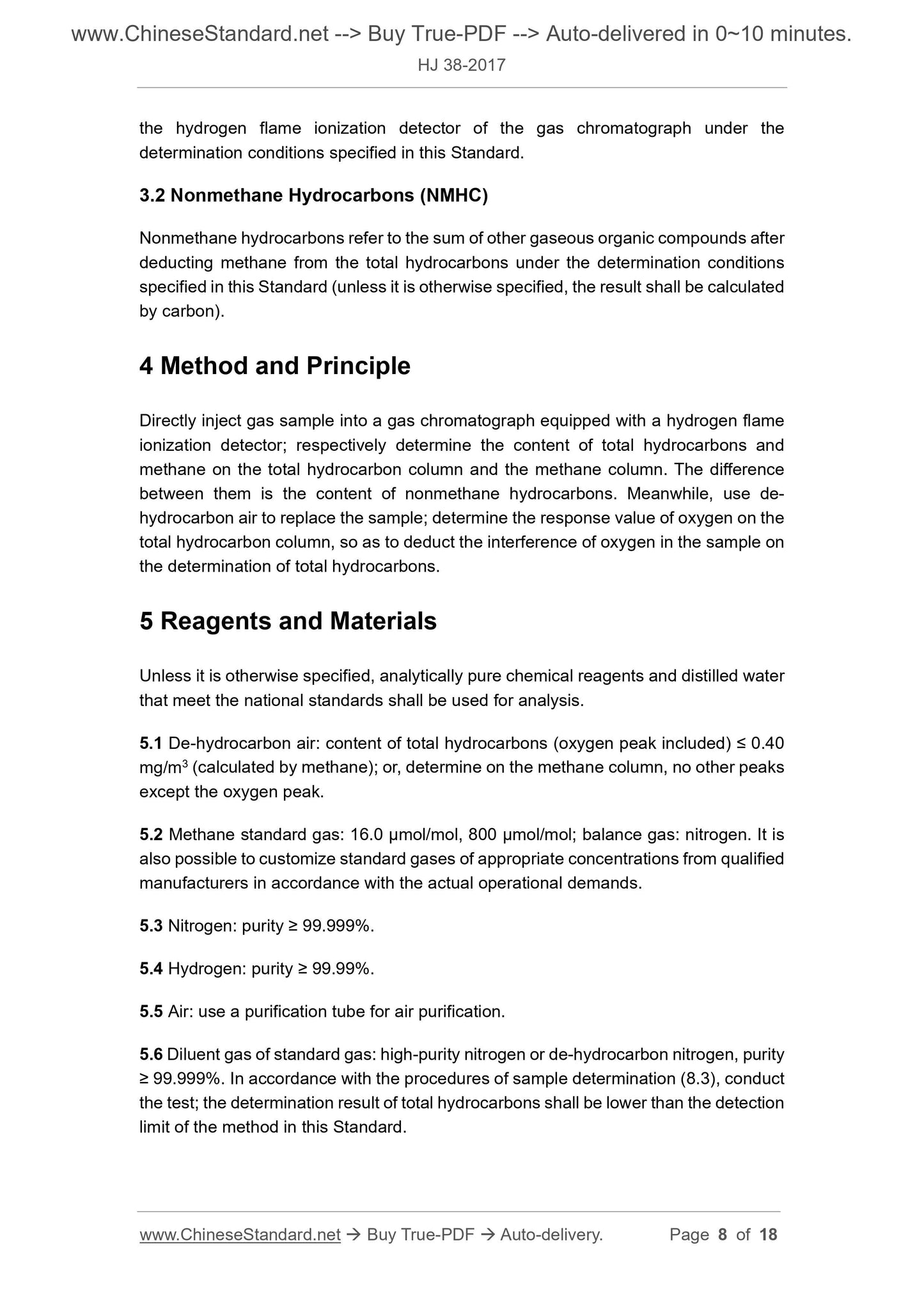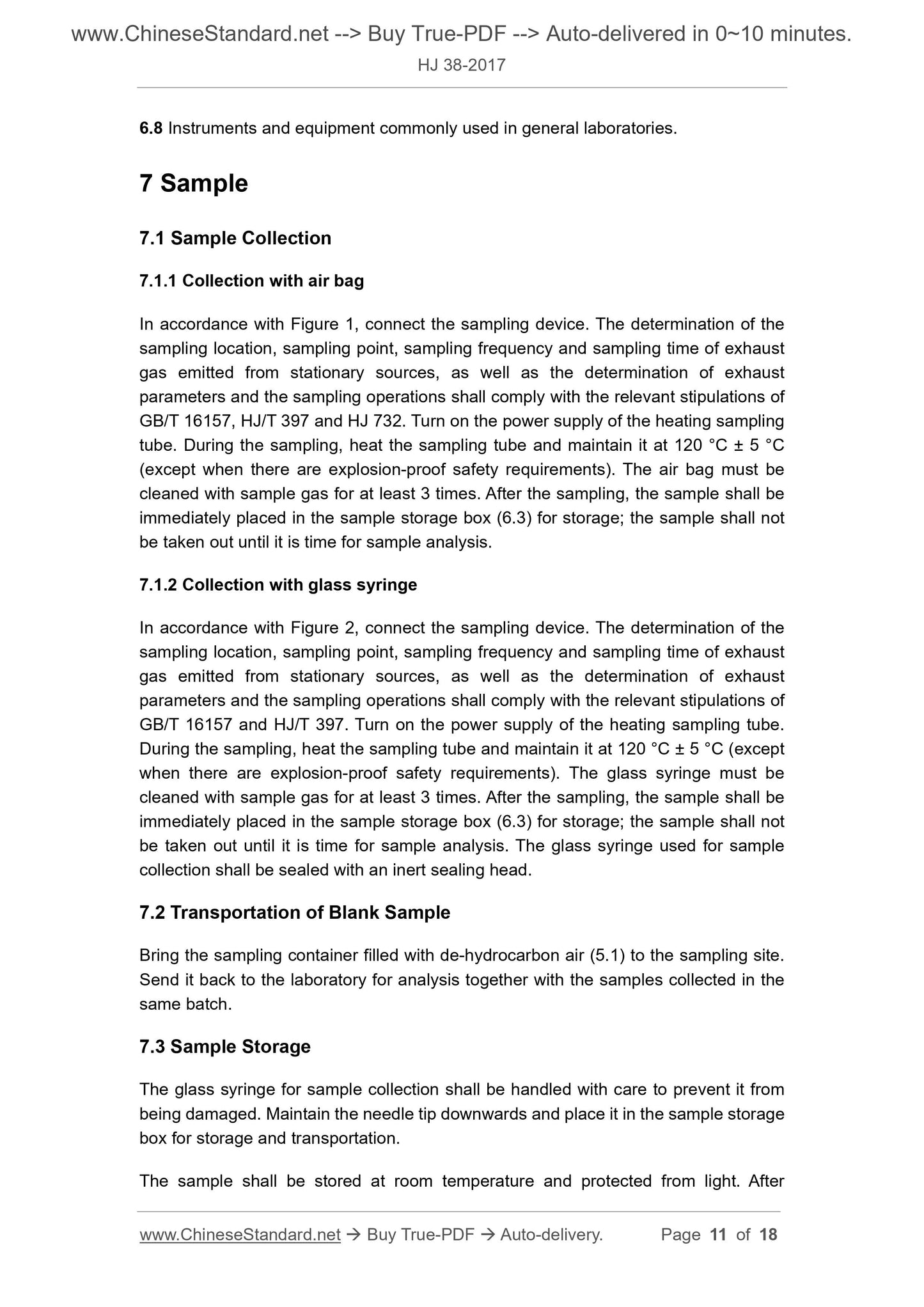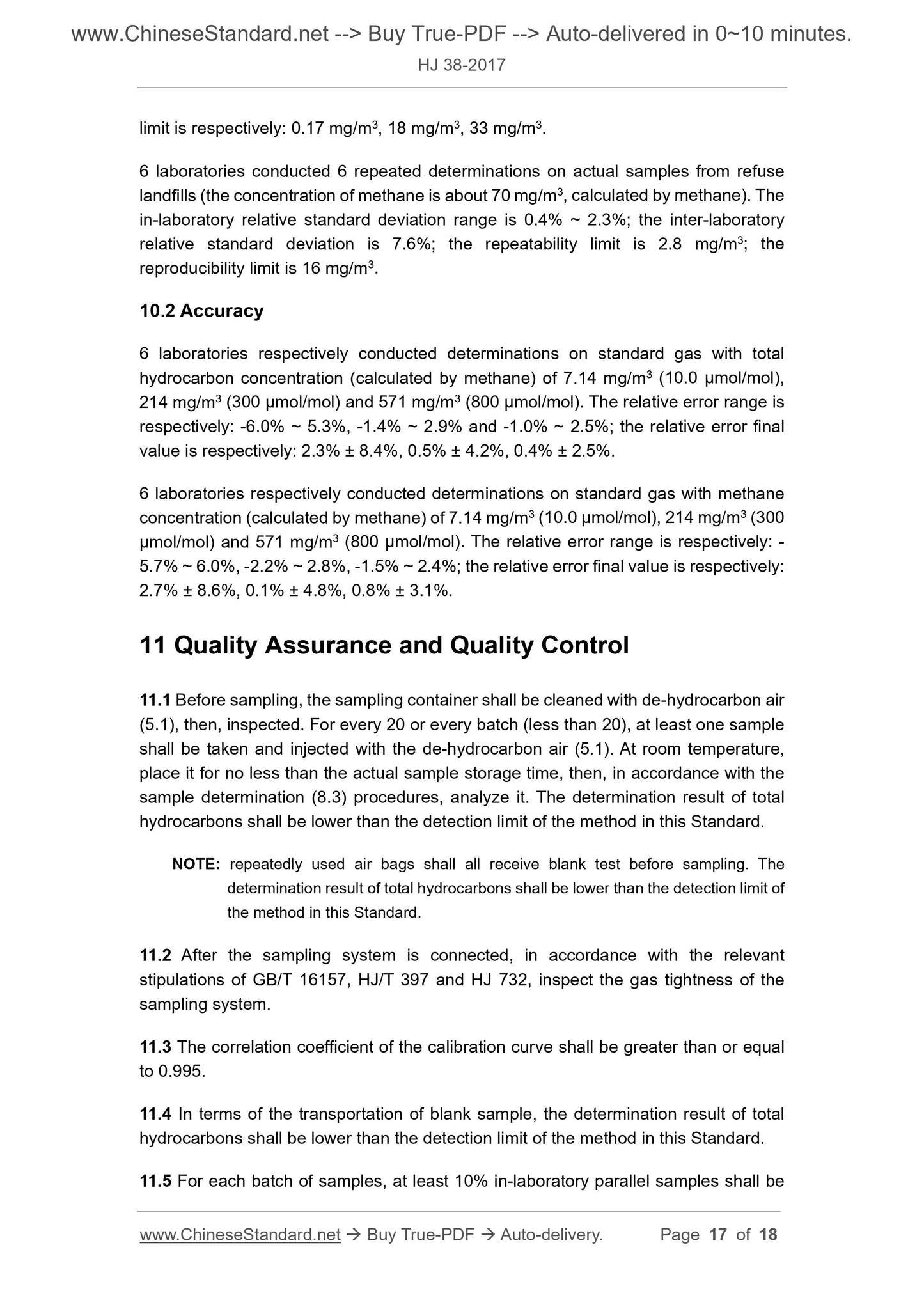1
/
of
6
www.ChineseStandard.us -- Field Test Asia Pte. Ltd.
HJ 38-2017 English PDF
HJ 38-2017 English PDF
Regular price
$125.00
Regular price
Sale price
$125.00
Unit price
/
per
Shipping calculated at checkout.
Couldn't load pickup availability
HJ 38-2017: Stationary Source Emission - Determination of Total Hydrocarbons, Methane and Nonmethane Hydrocarbons - Gas Chromatography
Delivery: 9 seconds. Download (and Email) true-PDF + Invoice.Get Quotation: Click HJ 38-2017 (Self-service in 1-minute)
Newer / historical versions: HJ 38-2017
Preview True-PDF
Scope
This Standard specifies the gas chromatography method of determining totalhydrocarbons, methane and nonmethane hydrocarbons in exhaust gas emitted from
stationary sources.
This Standard is applicable to the determination of total hydrocarbons, methane and
nonmethane hydrocarbons in organized emission of exhaust gas from stationary
sources.
When the sample injection volume is 1.0 mL, the detection limits of total hydrocarbons
and methane determined by this method are 0.06 mg/m3 (calculated by methane), and
the lower limits are 0.24 mg/m3 (calculated by methane); the detection limit of
nonmethane hydrocarbons is 0.07 mg/m3 (calculated by carbon), and the lower limit is
0.28 mg/m3 (calculated by carbon).
Basic Data
| Standard ID | HJ 38-2017 (HJ38-2017) |
| Description (Translated English) | Stationary Source Emission - Determination of Total Hydrocarbons, Methane and Nonmethane Hydrocarbons - Gas Chromatography |
| Sector / Industry | Environmental Protection Industry Standard |
| Classification of Chinese Standard | Z25 |
| Word Count Estimation | 12,116 |
| Date of Issue | 2017-12-29 |
| Date of Implementation | 2018-04-01 |
| Older Standard (superseded by this standard) | HJ/T 38-1999 |
| Regulation (derived from) | Ministry of Environmental Protection Bulletin 2017 No. 86 |
| Issuing agency(ies) | Ministry of Ecology and Environment |
Share
